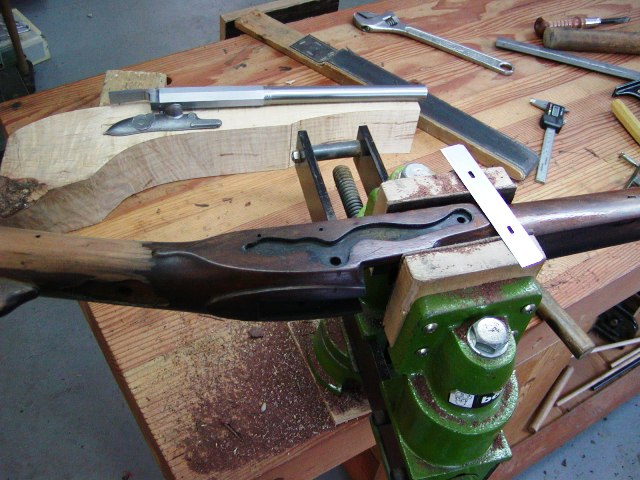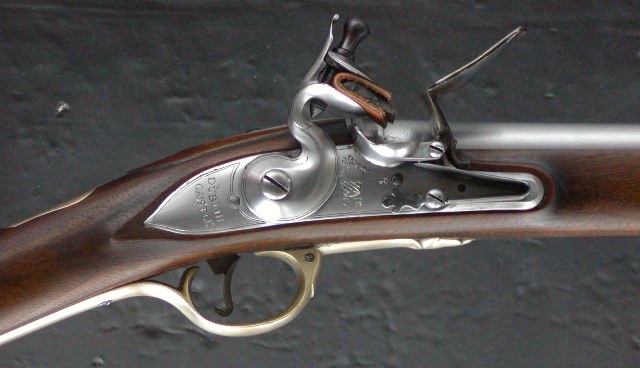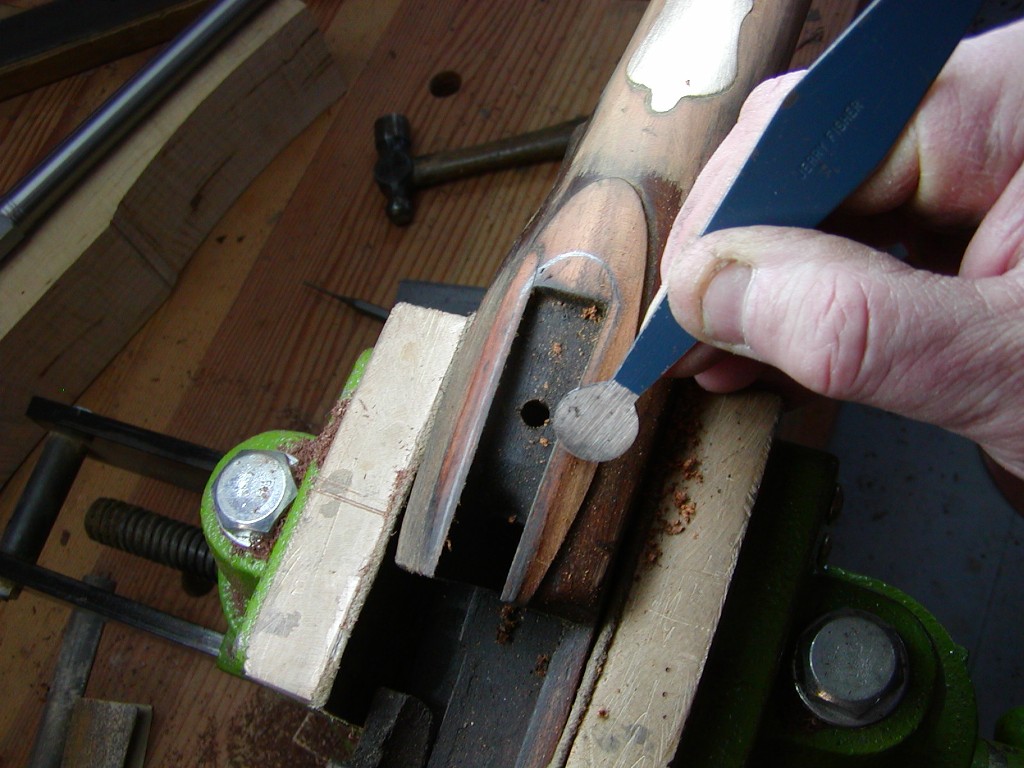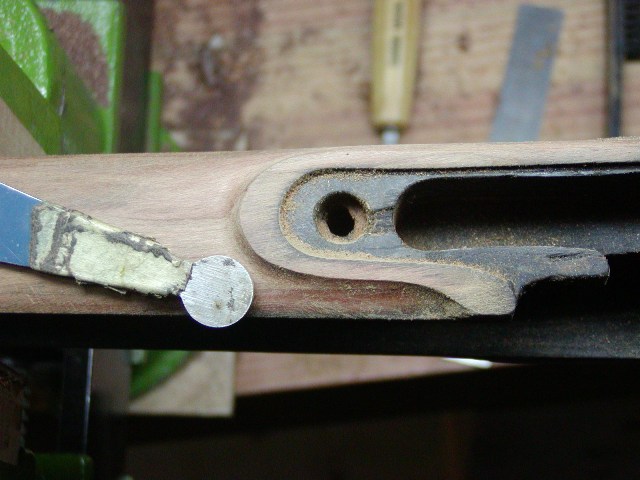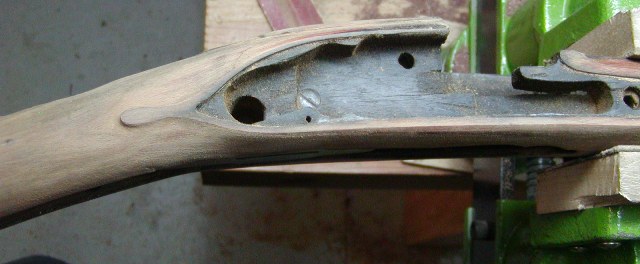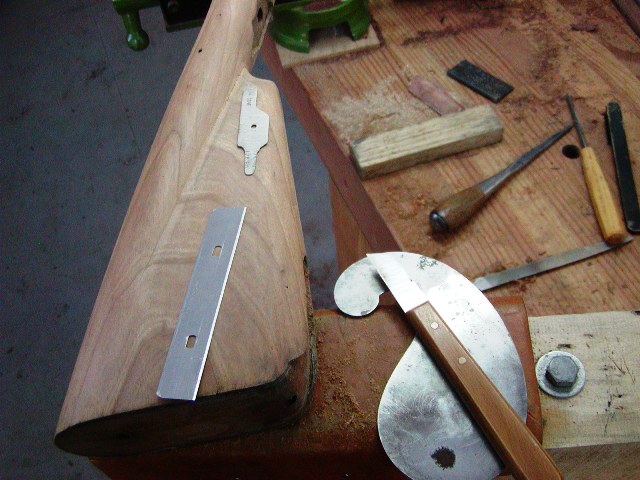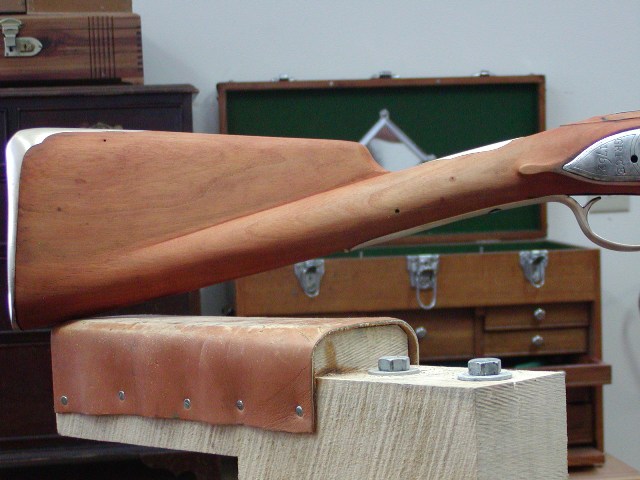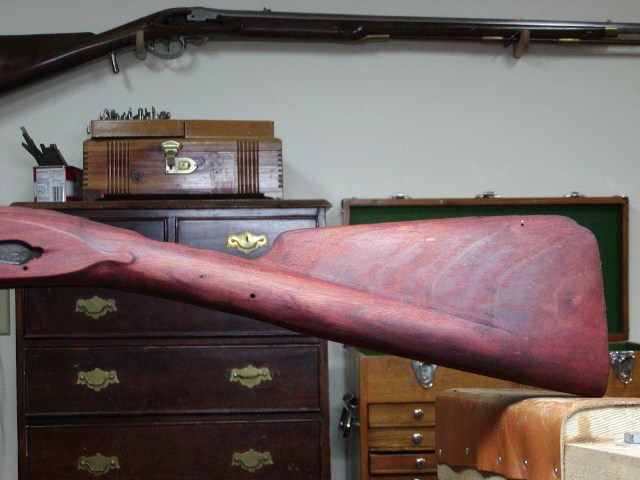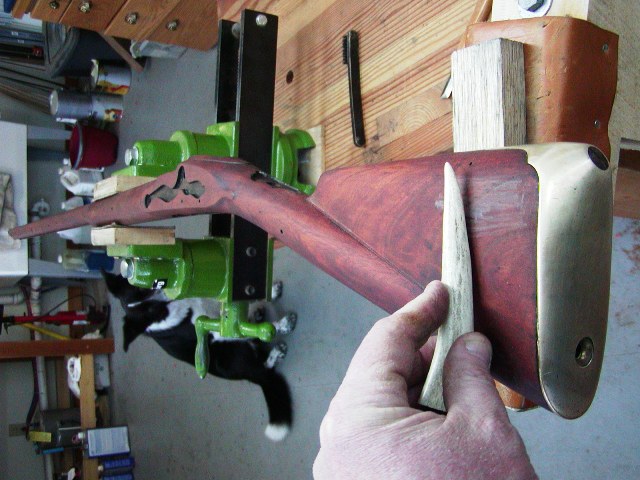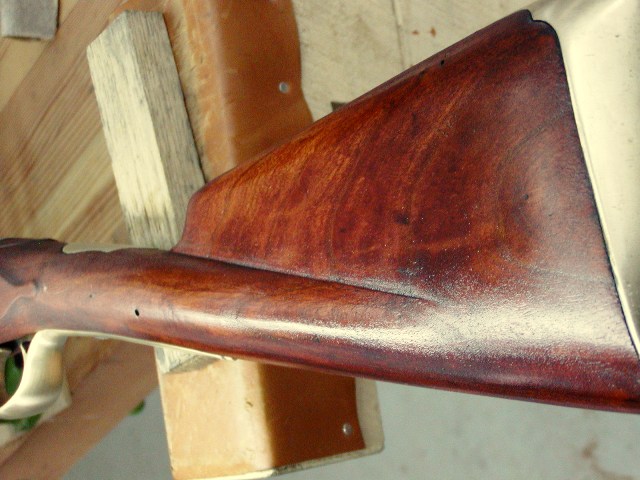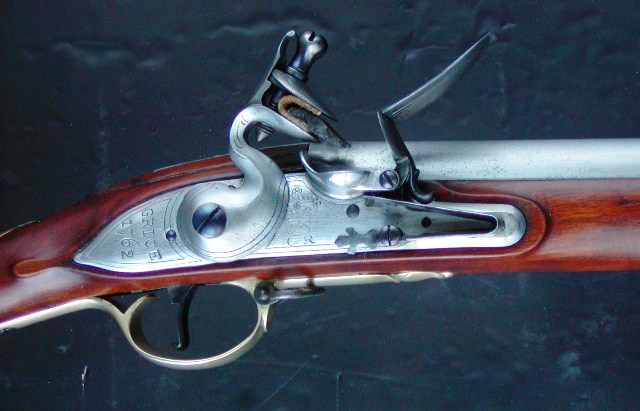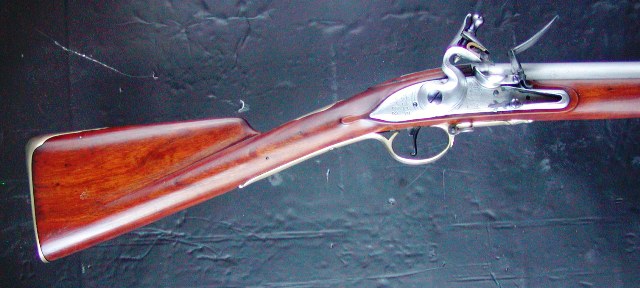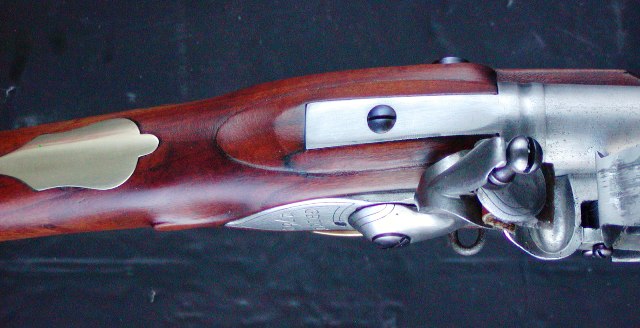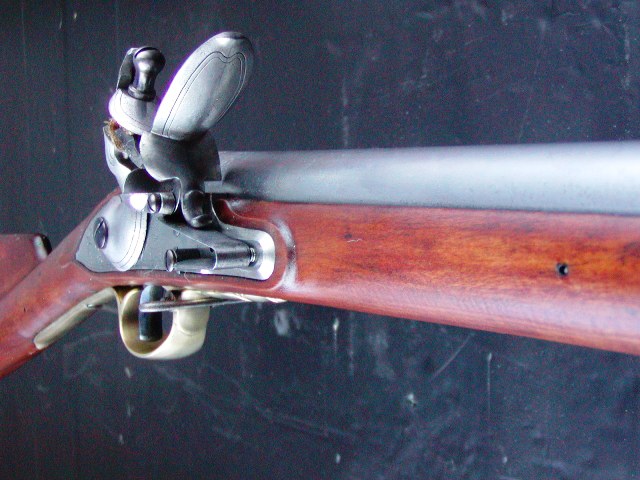- Joined
- Jan 6, 2022
- Messages
- 10
- Reaction score
- 3
Hello there - new member.
I've challenged myself with the task of refinishing a worn Pedersoli Brown Bess stock - the musket has some wear through the finish and has dings/dents from heavy use over the years. My concern is it has so many dings and dents that I'm not sure if I should put my expectation of a gorgeous restored result all that high; I can't sand down the walnut enough to remove the dings and dents in the wood, so I'm not sure if I should really try all that hard. My main aim is to restore a consistent finish and protect the unfinished wood, and if I can have it looking a little less battered after-the-fact, great. This is an active re-enactor's musket, so I want take the opportunity to do it during the winter months so it can be returned to use before the spring.
Here are some pictures - I'm looking for recommendations on how to approach stripping & refinishing the stock; I've seen some people recommend using acetone to remove the lacquer, and others recommend sanding - any help would be most appreciated, this is a first time for me.
I can supply additional pictures if that helps, but I think these give you the gist of what I'm getting myself into..
Thanks!
-Drew







I've challenged myself with the task of refinishing a worn Pedersoli Brown Bess stock - the musket has some wear through the finish and has dings/dents from heavy use over the years. My concern is it has so many dings and dents that I'm not sure if I should put my expectation of a gorgeous restored result all that high; I can't sand down the walnut enough to remove the dings and dents in the wood, so I'm not sure if I should really try all that hard. My main aim is to restore a consistent finish and protect the unfinished wood, and if I can have it looking a little less battered after-the-fact, great. This is an active re-enactor's musket, so I want take the opportunity to do it during the winter months so it can be returned to use before the spring.
Here are some pictures - I'm looking for recommendations on how to approach stripping & refinishing the stock; I've seen some people recommend using acetone to remove the lacquer, and others recommend sanding - any help would be most appreciated, this is a first time for me.
I can supply additional pictures if that helps, but I think these give you the gist of what I'm getting myself into..
Thanks!
-Drew







Last edited:






